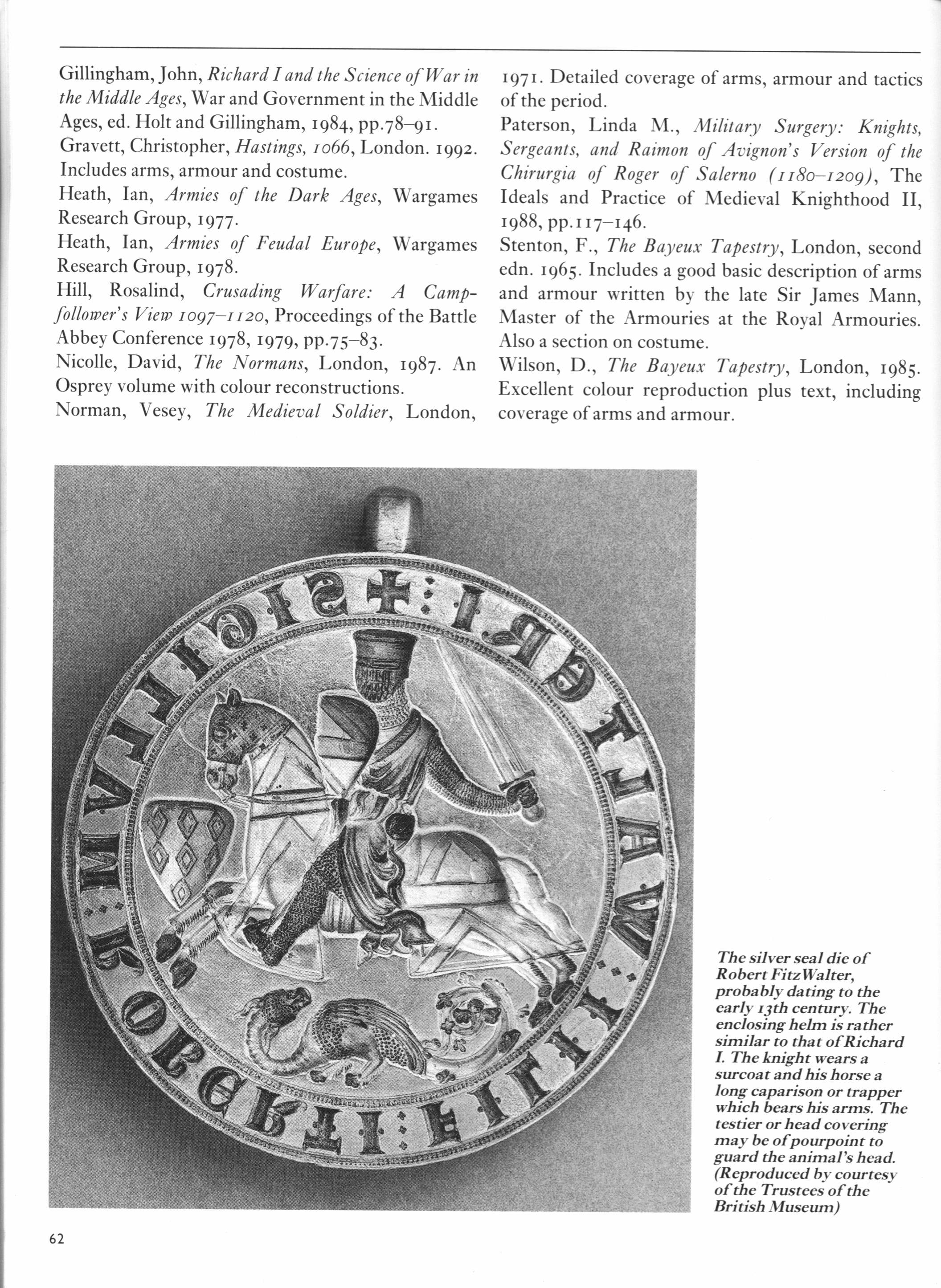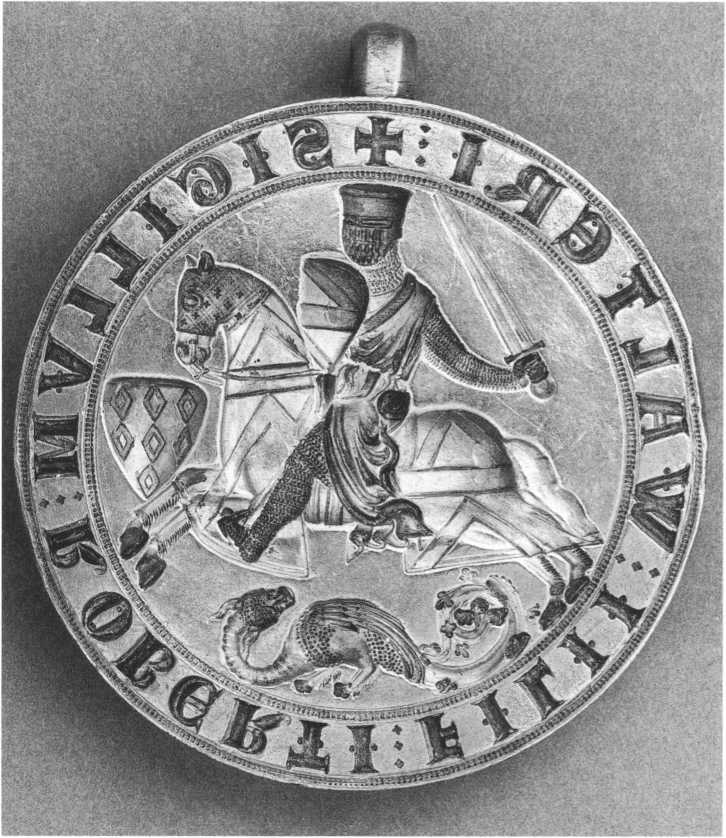64576 w01b

Gillingham, John, Richard I and the Science ofWar in the Middle Ages, War and Government in the Middle Ages, ed. Holt and Gillingham, 1984, pp.78-91. Gravett, Christopher, Hastings, 1066, London. 1992. Includes arms, armour and costume.
Heath, łan, Armies of the Dark Ages, Wargames Research Group, 1977.
Heath, łan, Armies of Feudal Europę, Wargames Research Group, 1978.
Hill, Rosalind, Crusading Warfare: A Camp-followers Viem iogy-i 120, Proceedings of the Battle Abbey Conference 1978, 1979, pp.75—83.
Nicolle, David, The Normans, London, 1987. An Osprey volume with colour reconstructions.
Norman, Vesey, The Medieval Soldier, London,
1971. Detailed coverage of arms, armour and tactics of the period.
Paterson, Linda M., Military Surgery: Knights, Sergeants, and Rairnon of Avignon s Yersion of the Chirurgia of Roger of Salerno (u8o—i2og), The Ideals and Practice of Medieval Knighthood II, 1988, pp.117-146.
Stenton, F., The Bayeux Tapestry, London, second edn. 1965. Includes a good basie description of arms and armour written by the late Sir James Mann, Master of the Armouries at the Royal Armouries. Also a section on costume.
Wilson, D., The Bayeux Tapestry, London, 1985. Excellent colour reproduction plus text, including coverage of arms and armour.

The silver scal die of Robert FitzWalter, probably dating to the early tjth century. The enclosing hełm is rather similar to that o f Richard I. The knight wears a surcoat and his horse a long caparison or trapper which bears his arms. The testier orhead covering may be of pourpoint to guard the animaTs head. (Reproduced by courtesy of the Trustees of the British Muscum)
62
Wyszukiwarka
Podobne podstrony:
186 Notes de lectuje 10 PASCHALIS M. KITROMILIDES, John Locke and the Greek Intellectual Tradi(
The Cłassic Film Cołłection _TUC_Searchers The basis for the dassic movie starring John Wayne and di
Arms and Armour Combat Aircraft of World War Two COMBATśAIRCRAFTOF WORLD WAR TYYO Klko C Wfeal, -J
71962 TME$7 Richards, Franklin Son of Reed and Sue Richards of the Fani as nc Four, Franklin Richard
censorship, (13) 122 Blackout “Their Love was a Flame that Destroyed!" John Garfield and Lan
14 John will take the dog to the vet. ŚWIAT PRZYRODY Module 13 - Naturę; zaimki względne 1
27. B.96907 CENTRAL bank management / ed. by John Mendzela and Nick Carver ; [with
44. A.69475 DESIGNING the European model / ed. by Seppo Honkapohja and Frank Weste
226 M. Ślęzok, K. Łuczak 6. Beebe Richard S. (2001), Automated Parking: Status in
europe?bt What the Europę debt bomb looks like & Banks and governments in these five shaky econo
TUTORIAL 3 A STRESS PATTERNS / EXAMPLES Is that the man who sent you the tickets. Ą O HasnT John giv
30b989efec67d574f374a8fab0b8f76a First fili out requisition form 1-B, indicating the ąuantity need-e
670
SCIENTIX ® The community for science education in EuropęSCIENTK W POLSCEKrajowa konferencja Scientix
SCIENTIX The community for science education in Europę Zespółpferwszych Ambasadorów Scientix
więcej podobnych podstron